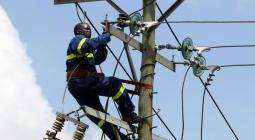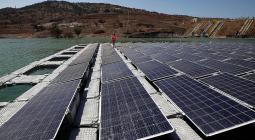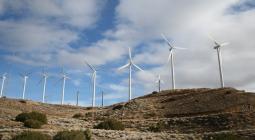How countries can learn from Jordan’s renewable energy pivot.

By 2021 the country is aiming to have well over half of its power generated by wind or solar energy
On the road from Wadi Rum to Petra in Jordan, where signs point to the Sheikh Zayed solar complex, wind turbines turn languidly in a steady breeze. At Petra, even Bedouin encampments have solar panels and many homes in Amman use solar tubes to heat water. The UAE made headlines with its world-record solar installations, but in all the Middle East, the impact of the renewable revolution is most visible in the Jordanian landscape.
By last year, the Hashemite kingdom had installed 285 megawatts of wind and 771MW of solar power, a significant chunk of its total generation of about 4 gigawatts. By 2021, it wants to have 2.7GW of renewable capacity. Over the next decade, Jordan’s efforts could really take off – providing half of all electricity output, in our analysis at Qamar Energy. It is only a small market, but it is an important trailblazer for the region’s aspirations in renewables.
Jordan’s success has been built on good resources, solid policy and the imperatives of an energy crisis. Like most Middle East countries, the kingdom has abundant sunny desert land and, similar to Egypt and northern Saudi Arabia, it’s also quite windy in places.
The country started early on encouraging renewables with the Tafila wind farm, a joint venture with Masdar, built in 2015. It offers investors a reasonable return, and gives smaller users such as hospitals and universities the chance to build solar panels on vacant land and transmit the power through a grid.
The biggest impetus to alternative energy was the cut-off from Egyptian gas supplies following the 2011 revolution, because of repeated militant attacks on the Sinai pipeline. Jordan’s budget deficit widened because the country, which imports more than 90 per cent of its energy needs and has historically financed its deficits through grants and soft loans, had to burn expensive oil for electricity. Jordan, which already hosted thousands of Iraqi refugees, had to accommodate an increasing power demand due to an influx of 1.3 million Syrians escaping the conflict in their country.
In response, the kingdom opened a liquefied natural gas import terminal at Aqaba, and negotiated supplies from the American company Noble, which produces from offshore Israel. Jordan has large resources of oil shale, effectively an immature form of petroleum source rocks, which can be cooked into oil. A Chinese-led consortium is developing a power plant based on burning this dirty material.
"Jordan’s success has been built on good resources, solid policy and the imperatives of an energy crisis."
Efforts to construct a nuclear power plant have been hampered by a lack of cooling water, public opposition and the high costs of financing. Instead, Amman may opt for smaller, modular nuclear reactors that could be fabricated off-site.
To cover the higher costs of fuel, energy subsidies had to be cut back, putting a heavy burden on citizens at a time of sharp economic slowdown. But this had the positive effect of making individual rooftop solar installations attractive for small businesses and householders.
Local Jordanian companies, such as Kawar Energy and Shamsuna Power, along with Dubai-based companies including Yellow Door Energy, have created viable businesses and high-skilled employment. By the early 2020s, Jordan will have the Middle East’s lowest carbon output electricity grid, despite the carbon-heavy oil shale facility.
Success will soon bring its own challenges. Renewable output will exceed total demand at times, while the country still needs to provide for high-consumption and night-time periods. Hydropower, which could be used to store excess renewables, is minimal in the desert country.
The Red-Dead Sea project is intended to bring water to the Dead Sea, which is fast drying up due to climate change and the overuse of the Jordan River. On the way, the water would generate power for desalination. But the expensive venture faces environmental concerns and political hurdles in co-operating with Israel.
Philadelphia Solar, a local company, has announced plans for a solar plant with battery storage. Concentrated solar thermal plants (CSP), like the one under construction in Dubai, can save the Sun’s heat to generate power overnight. These do not seem to be part of Jordan’s plans yet, but the country has excellent conditions for CSP.
Electricity interconnections with Egypt, Saudi Arabia, Iraq and the West Bank are also under way, which could boost the resilience and renewable share of the whole area’s power grid. It could also send power to help rebuild war-torn Syria.
Jordan's consumers will have to consider the benefits from the country’s renewable expansion, particularly industries which have complained of high electricity prices. Prices are high during peak demand hours, but this scheme will have to become more flexible to lower prices when there is an excess of solar.
Jordan’s small market and head start in renewable energy means it will reach these hurdles to solar deployment probably before any other country in the region. Its success in devising policies to continue attracting capital, boosting its renewable generation, local employment and electricity exports, while reducing consumer bills, will be an important signal for its neighbours.
This is particularly true for countries in the Arabian Gulf – whose utility companies are thinking about how to overcome similar barriers to their bold renewable plans. Such complementary resources and opportunities open the space for co-operation between these two regional allies.
Robin Mills is CEO of Qamar Energy, and author of The Myth of the Oil Crisis
10 June 2019
THE NATIONAL




